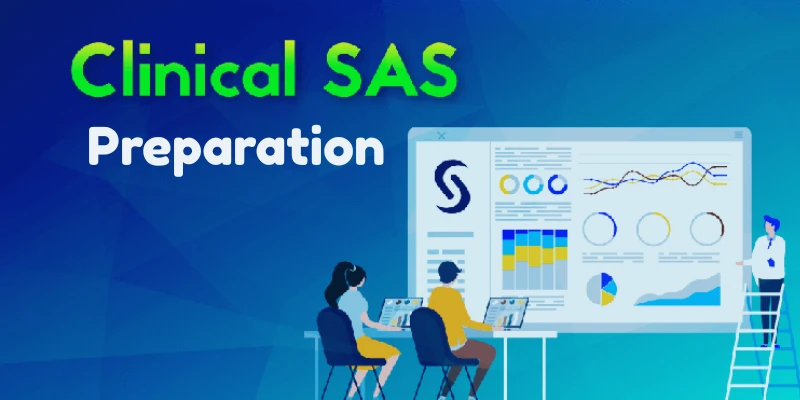
Clinical SAS is the use of SAS (Statistical Analysis System) software in clinical research and the pharmaceutical industry to manage, analyse, and report clinical trial data. It plays a crucial role in ensuring data accuracy, regulatory compliance, and generating detailed reports for health authorities, such as the U.S. Food and Drug Administration (FDA). Enrolling in a Clinical SAS Training in Chennai can provide you with the essential skills and hands-on experience needed to excel in this high-demand field.
What is Clinical SAS?
Before diving into preparation, let’s understand what Clinical SAS is. Clinical SAS refers to using SAS software to manage, analyse, and report data from clinical trials. It’s widely used by pharmaceutical companies, contract research organisations (CROs), and regulatory bodies, such as the FDA.
Clinical SAS programmers play a crucial role in transforming raw clinical data into actionable reports that support drug approvals and informed medical decisions.
1. Understand the Basics of SAS Programming
The first step in preparing for Clinical SAS is to build a solid foundation in base SAS programming. Focus on:
- Data Step Processing: Learning how to read, manipulate, and write data using the DATA step. Join a SAS Training in Chennai to build strong data handling skills essential for clinical trials, analytics, and real-world healthcare data management.
- SAS Procedures (PROC): Familiarise yourself with commonly used procedures PROC SORT, PROC PRINT, PROC MEANS, PROC FREQ, and PROC REPORT.
- Functions and Loops: Understand SAS functions and how to use conditional statements and loops.
2. Learn About Clinical Trial Data
Understanding clinical trial design and the type of data generated is key to working in Clinical SAS. You should learn:
- Clinical trial phases (Phase I–IV)
- Case Report Forms (CRFs)
- Inclusion and exclusion criteria
- Adverse events and lab data
Study sample datasets and get familiar with industry-standard data formats. Resources CDISC (Clinical Data Interchange Standards Consortium) help learn standard data models, such as SDTM (Study Data Tabulation Model) and ADaM (Analysis Data Model).
3. Explore SDTM and ADaM Standards
In Clinical SAS, data standardisation is crucial. Regulatory bodies expect clinical data to follow specific formats:
- SDTM is used for submitting raw clinical trial data.
- ADaM is used to create analysis-ready datasets.
Understand how to map raw data into these standardised formats. Gaining a strong foundation through SQL Training in Chennai can also enhance your ability to work with databases and manage clinical data efficiently.
4. Practice Creating TLFs (Tables, Listings, Figures)
Another critical area in Clinical SAS is generating TLFs, which are the outputs that summarise clinical data:
- Tables: Summary tables of subject demographics or lab results
- Listings: Detailed subject-level data for review
- Figures: Graphs and charts for visual representation
Discover the Top 4 Applications of SAS to enhance your knowledge and gain practical experience in real-world data analysis.
5. Gain Hands-On Experience
Theory alone won’t prepare you for a Clinical SAS role. Get as much hands-on practice as possible. Here’s how:
- Work on sample clinical trial datasets.
- Replicate real-world projects, generating SDTM datasets or creating summary tables.
- Join internships or volunteer for research projects that involve data management or analysis.
6. Learn About Regulatory Requirements
As a Clinical SAS programmer, you’re working in a highly regulated environment. It’s important to understand:
- FDA guidelines
- 21 CFR Part 11 compliance
- ICH-GCP (Good Clinical Practice)
Choosing the right Training Institute in Chennai can provide you with the knowledge and skills to effectively maintain these critical aspects.
7. Prepare for Interviews
Once you’ve gained skills, the next step is job preparation:
- Review common Clinical SAS interview questions.
- Be ready to explain data steps, PROC usage, and your understanding of SDTM and ADaM.
- Practice writing and explaining code.
- Showcase any real-time projects or internships in your resume and portfolio.
Explore the growing scope of SAS in the healthcare industry to understand how it’s transforming clinical research, patient data analysis, and drug development.
Preparing for a career in Clinical SAS may seem challenging at first, but with the right approach, it’s achievable. Start with the basics of SAS programming, understand the clinical research domain, master data standards SDTM and ADaM, and get plenty of hands-on practice.
